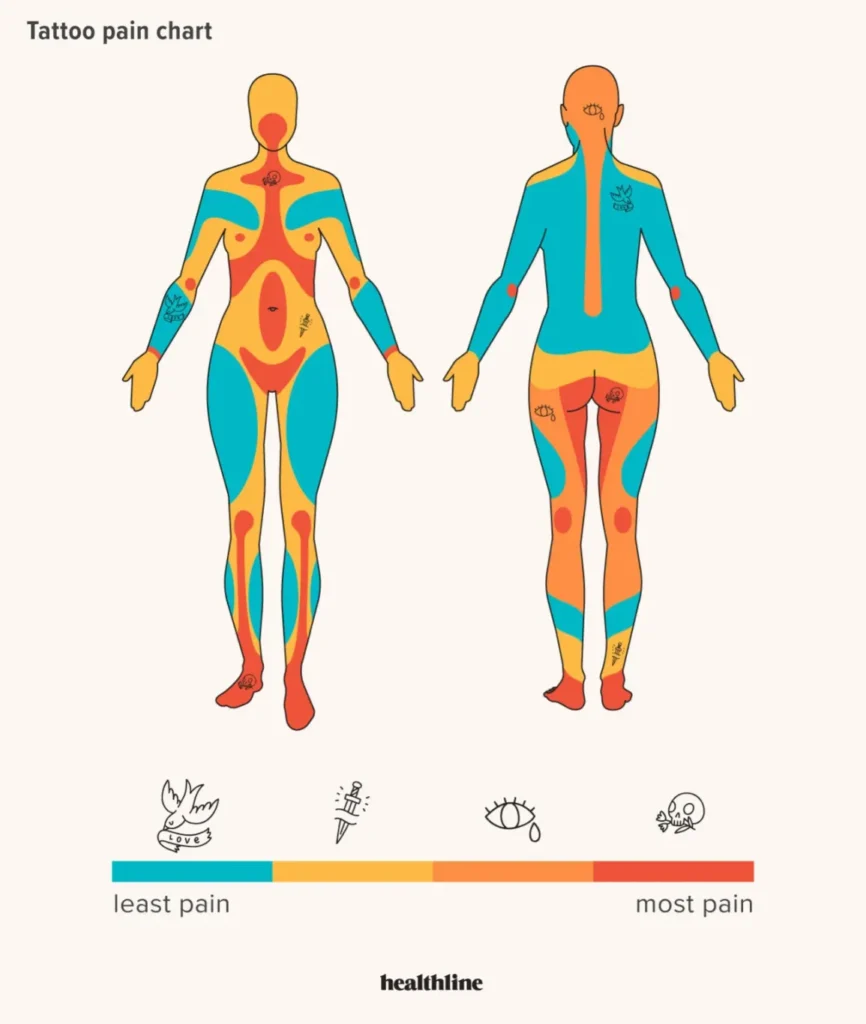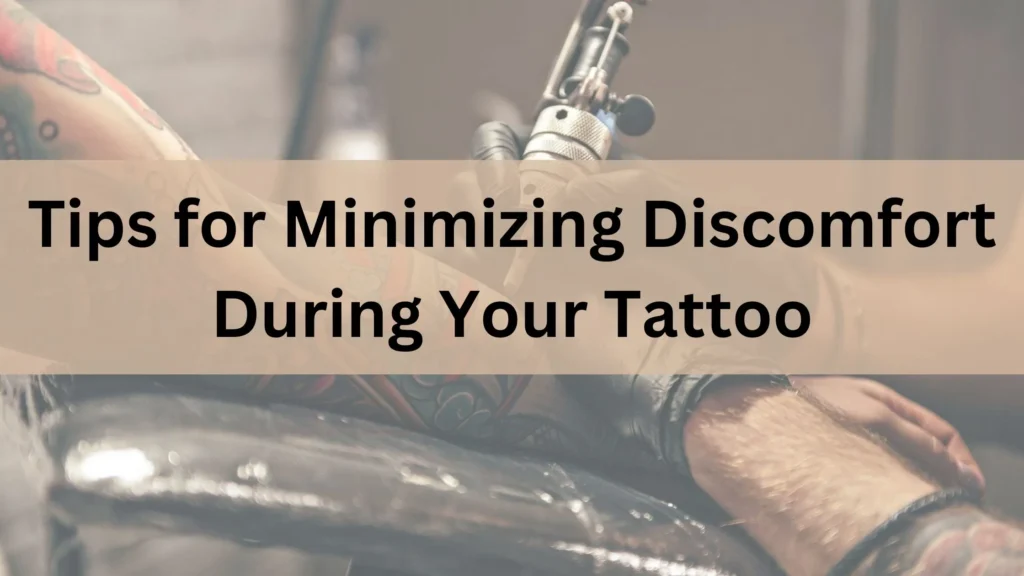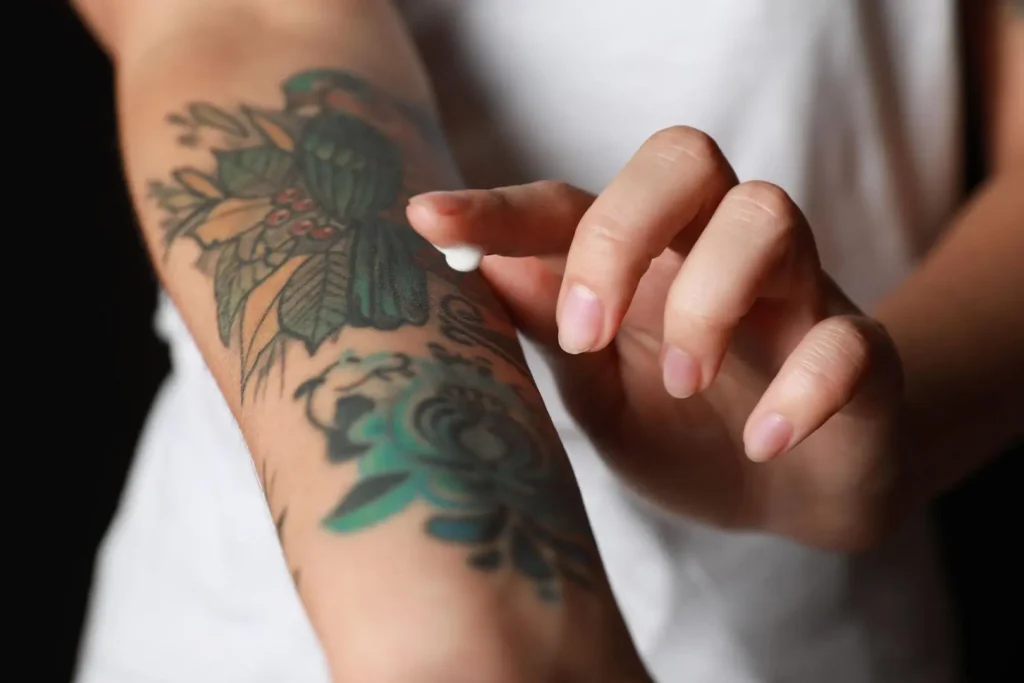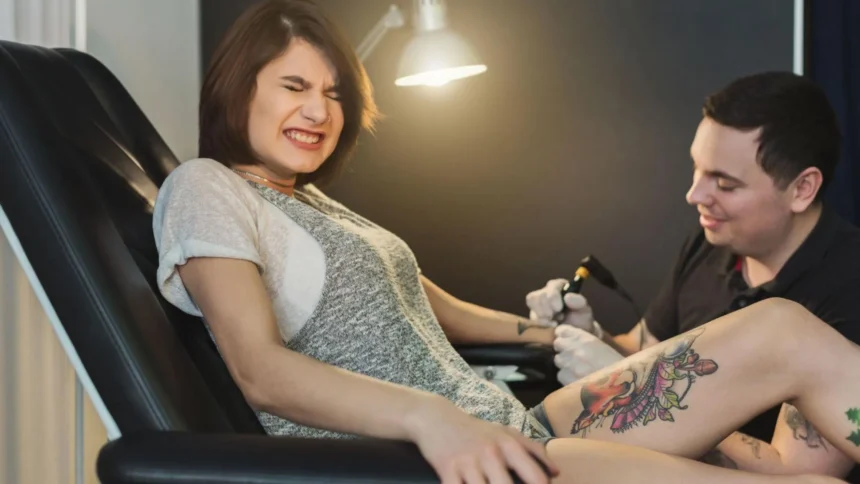Thinking about getting a tattoo but don’t know the least painful tattoo spots? Not all places on the body are equally sensitive to ink. Forearms win the prize with their thick skin and not much bone. The outer upper arms, shoulders and thighs also have a good amount of muscle and fat on them.
Understanding Pain During Tattooing
Even if the pain feeling is unique to each person, there are some things that usually make certain parts painful for tattoos. Places having thicker skin and less bone, such as forearms, give a bit more cushion. In contrast, parts filled with nerve endings similar to ribs will be extra sensitive.
Other Relatively Least Painful Tattoo Spots
Among these areas, forearms are the most comfortable; however, there are other great least painful tattoo spots.
Outer Upper Arms: Like forearms, the outer upper arms provide thick skin and less bone exposure, giving a pleasant feeling.
Outer Shoulders: The padding of muscle and thicker skin on outer shoulders act as a cushion against the needle, making it overall more comfortable to get tattoos there.
Outer Upper Thighs: The outer upper thighs are like a natural softener, with plenty of muscle and fat that greatly lessens the needle’s effect. This is very good for bigger tattoos.
Calves: Although a few spots may be bony, in general, the outer calf has muscle volume which allows for easier tattooing. However, take note of the sensitive area around Achilles tendon.
Beyond the Top Spots
The least painful tattoo spots may not be the same for everyone. People’s bodies are not all identical, and pain endurance can differ significantly. For certain individuals, places such as calves or even the chest might be bearable due to an adequate quantity of muscle mass in those areas.

Most Painful Placements
After knowing about least painful tattoo spots, how can we forget about most painful spots?
Ribs: The slight skin and lack of muscle cushioning in this area amplify the sensations of each needle poke.
Spine: This area of bone is very sensitive because nerves are close to the surface. Do not get tattooed on your spine.
Fingers and Hands: The hands and fingers have many nerve endings, along with thin skin that makes them prone to pain.
Knees and Elbows: They have plenty of bone and tendons, which means there’s not much cushion for the needle.
Neck and Throat: The delicate skin on the neck and throat, combined with close presence of big blood vessels and nerves, usually results in an uncomfortable experience when getting tattoos here
Armpit and Groin: These spots are packed with nerves and immune system nodes, plus the skin is quite thin and sensitive.
Tips for Minimizing Discomfort During Your Tattoo

These are some least painful tattoo spots but you will still feel some pain but there are some ways to reduce it.
– A body that has rested well is a content (and less sore) body. Try to sleep properly the night before your appointment.
– It is crucial to drink lots of water before going to get a tattoo. This keeps your skin full and hydrated, making it simpler for the needle to go through and possibly minimizing some discomfort.
– Have a good meal first so you have enough energy and don’t feel dizzy. But, stay away from too much sugar because it might make your blood sugar go up and down quickly.
– Put on clothes that are not too tight, created from fabrics which allow air to circulate and can be easily accessed around the tattoo part. Comfort is important during an extended session!
– You may feel inclined to use over-the-counter painkillers such as ibuprofen, but remember they can thin your blood and hinder proper healing of the tattoo. Talk about ways to handle pain, like using creams that numb the area first with your health professional before getting a tattoo.
– Occasionally, artists provide numbing sprays to alleviate pain when getting a tattoo. These may give momentary relief from discomfort, but speak about advantages and disadvantages with your artist because they might impact the final outcome of the tattoo.
– Carry headphones and insert them into your ears for listening to peaceful music, interesting podcasts or audiobooks; this helps divert attention from the needle. Having a conversation with the artist can also act as a good diversion.
– You should not feel afraid to ask for small pauses where you can walk around, stretch yourself or get a drink of water.
Taking Care of Your New Tattoo

After getting it on the least painful tattoo spots, Taking care after getting tattooed, such as cleaning and putting on lotion, helps for best healing. This can lessen irritation and danger of infection but also might affect felt pain in an indirect way. Skin that is irritated and inflamed will naturally have a higher sensitivity. By carefully looking after your fresh tattoo, you can keep it comfortable and encourage a better healing process.
This is our “least painful tattoo spots” guide. It will remain with you always, this artistic creation is a lasting memory of the path you took. So, you have changed from a beginner who was excited to someone with much knowledge about tattoos.
If you keep choosing good places, stick to these helpful hints and take care of your skin afterwards then go ahead confidently show off that ink.


Leave a Reply